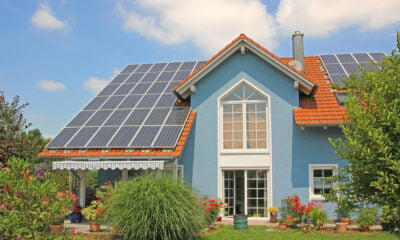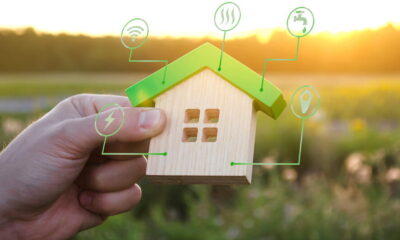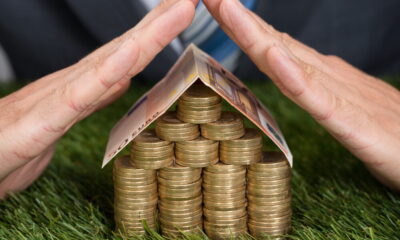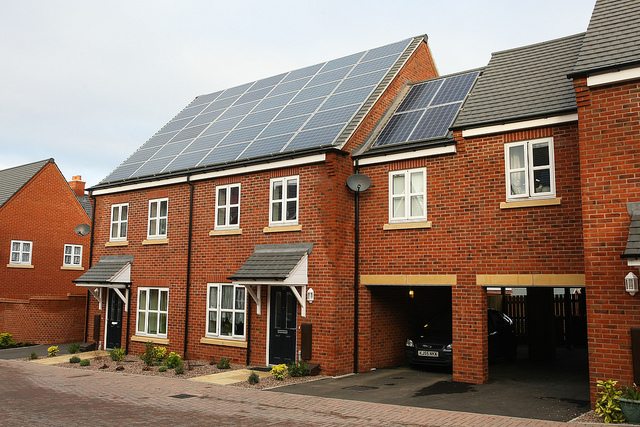
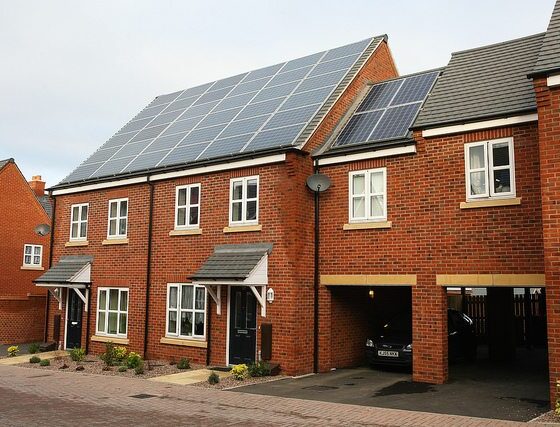
Environment
Investing In Sustainable Property
The property market is definitely changing. Where architects and investors used to prioritise functionality, cost, efficiency, build time and style, now they increasingly prioritise sustainability. It’s part of a new way of looking at the built environment that gives weight to environmentalist concerns, taking a longer-term perspective on the way we live. For people interested in new green investment opportunities, it’s an exciting area to explore.
Why property?
There has never been more ways to make eco-friendly investments than today, so what’s so special about property? Quite simply, it’s an area that has mass-market relevance and needs significant quantities of money to move forward. Ten years ago the solar power industry was in a similar position, needing investment in public projects to drive manufacturing so that prices would fall to the point where individual householders could start fitting their own solar systems. Today new technologies have made solar projects increasingly affordable so that most people can engage with them at some level, so for those who really want to help the planet; it’s worth looking at what’s next.
Sustainable property is a fast developing area and it’s in increasing demand; it’s likely to be several decades before supply comes close to matching demand. This means that investing in properties of this type now – whether they’re eco-friendly refurbishments of older buildings or carefully designed new builds – is liable to yield returns significantly above the market average over a prolonged period. By financing the greening of the property market, investors are helping to strengthen companies producing eco-friendly building materials, architects that specialise in sustainable design, etc. The money going into this sector right now can revolutionise the property market.
An evolving market
For a long time, eco-friendly homes were the preserve of the very well off, and even in recent years, they have only tended to be available to owner-occupiers, rarely appearing on the rental market. Many renters want to be environmentally friendly too, and in recent years letting agencies have increasingly been highlighting the green features of properties in order to attract them. There’s growing evidence that sustainable properties can attract higher monthly rents. This trend looks likely to grow stronger over time.
Outside the home rental market, the business rental market is increasingly motivated to seek out sustainable premises. Being based in an environmentally friendly location can do a lot for a business’ reputation, helping it attract investors of its own as well as extra customers. It can also help to impress regulators and government grant-awarding bodies.
In a third category, there’s the holiday rental market. Individuals who want to live in green homes – whether or not they already do so – also want to stay in eco-friendly places when they travel. Because holiday expenses are a one-off, they’ll pay a premium for the opportunity to do so.
Engaging with the market
Because this is a relatively new sector, it can be difficult to know how to get involved as an investor. Short of reading through endless company profiles and doing the research directly, there are two options. The first is to seek out an off-the-shelf green investment package that incorporates businesses of this type. This is getting easier as the overall volume of green packages increases. The second is to seek out an investment manager with a reputation for working in this field. Companies like Pierre & Vacances Property Investments specialise in constructing eco-friendly properties and managing them on behalf of investors. Pierre & Vacances are focused on holiday properties and are strong in overseas markets, but there are also investment management companies working in other parts of the sustainable property market, so investors can explore their options and decide on the strategy best suited to their financial priorities.
New building techniques
The single biggest priority most people have when it comes to sustainable living is energy efficiency, and this is an area which is constantly evolving. The move towards triple glazing in the UK, following the Scandinavian example, illustrates the way that scientific findings in relation to efficiency are influencing both refurbishments and new builds, but some experts now recommend sticking to double glazing on south-facing windows because this enables solar radiation to contribute more heat to the property than is lost as a result. There’s a growing focus on insulating foundations to stop heat being lost through concrete pilings, and the addition of radiant barriers in roof spaces is providing useful back-up for traditional loft insulation.
Water use and waste management are also significant concerns in this area and although it hasn’t advanced to the extent it has in dry areas of the US, the use of grey water is increasingly popular in the UK. It’s well suited to rural properties where there’s room to set up plant-based treatment systems.
Alongside these matters, there’s the issue of sourcing. Ultimately, a property is only as green as the materials it has been made from. It’s important to be able to trace these and get some background on the companies supplying them.
One further consideration is the expected lifetime of the final construction. The building process itself has a significant environmental impact, so truly sustainable properties should be exactly that – built to last.
New building regulations
The relationship between building regulations and actual sustainable building is a complex one. When it comes to insulation, for instance, eco-friendly construction companies aim to have wall R-values double those recommended in most building codes. Regulations are generally negotiated to ensure certain minimum standards and merely meeting them shouldn’t be taken as proof that a construction is as good as it ought to be. That said, they can act as a prompt to encourage more responsible building, and investors can give themselves some protection by researching a company’s regulatory history before getting closely involved.
Investment in sustainable building may sound complicated but it’s very worthwhile. Sometimes it takes that little bit of extra effort to try to make the world a better place. In this case, it can really get results.


 Environment10 months ago
Environment10 months agoAre Polymer Banknotes: an Eco-Friendly Trend or a Groundswell?

 Environment11 months ago
Environment11 months agoEco-Friendly Home Improvements: Top 7 Upgrades for 2025

 Features9 months ago
Features9 months agoEco-Friendly Cryptocurrencies: Sustainable Investment Choices

 Features10 months ago
Features10 months agoEco-Friendly Crypto Traders Must Find the Right Exchange
